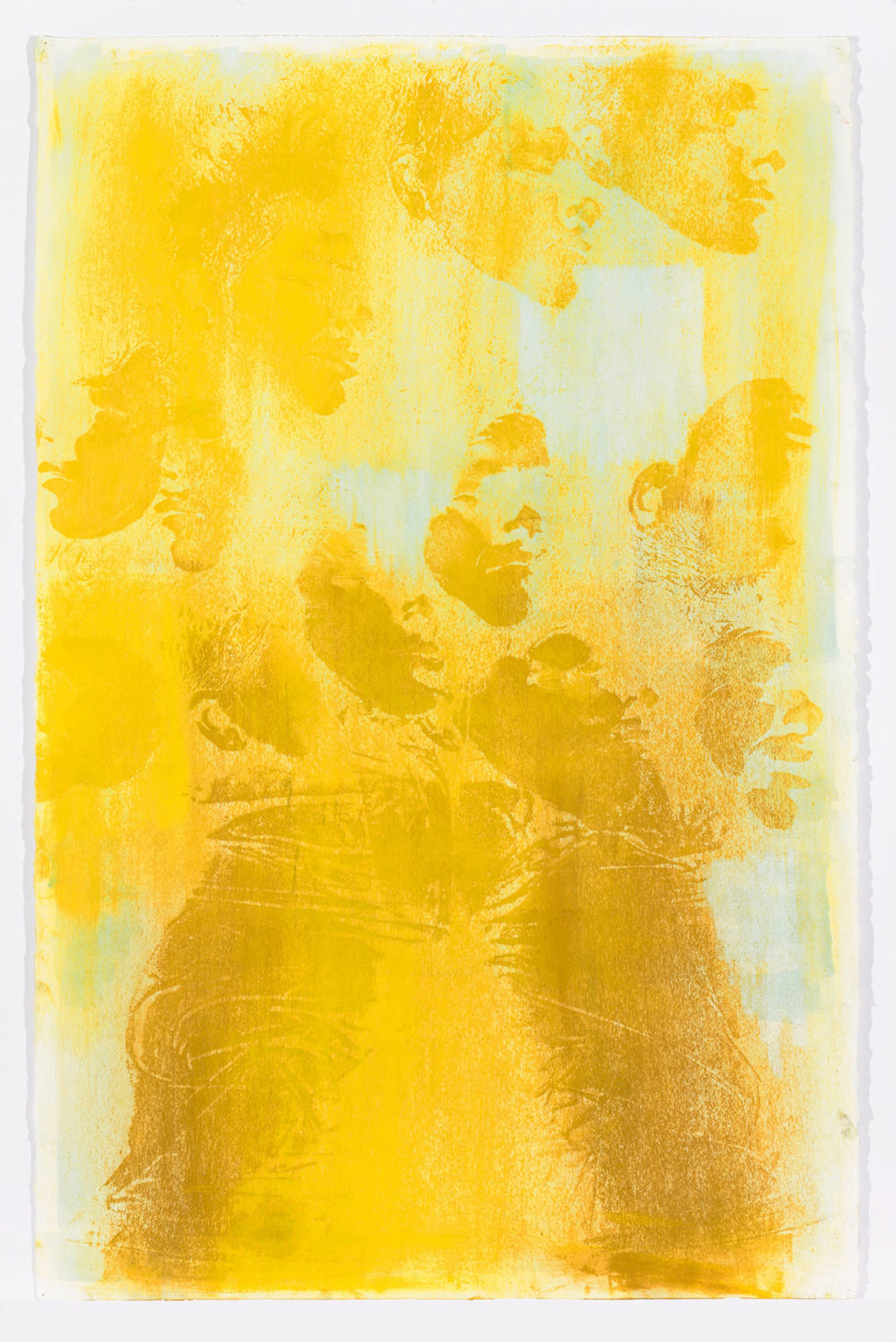
- Source: The New York Times
- Author: Martha Schwendener
- Date: September 17, 2015
- Format: PRINT AND DIGITAL
Review: Keltie Ferris
Woman Warrior

“Facade,” 2015, in oil and powdered pigment on paper, by Keltie Ferris, whose work is at Mitchell-Innes & Nash. Courtesy of the artist and Mitchell-Innes & Nash, New York
This has been a summer of women warriors: Serena Williams, Angela Merkel, Charlize Theron’s character in “Max Max: Fury Road,” and Shaye Haver and Kristen Griest, the first women to earn the United States Army’s elite Ranger designation. Now, in the final days of summer, painting’s warrior women are advancing, and Keltie Ferris is among them.
Ms. Ferris’s new paintings are aggressive and emphatic but also spectral and expansive. Early rumblings about this show on the Internet compared them with works by Albert Oehlen and others who make references to digital marks in their canvases. Yet Ms. Ferris remakes the digital in supremely analog form. What might read from afar (or in photographs) as pixels are, close up, thick rectangles of paint applied with a flat-ended brush. These marks distinctly recall the pointillism of Seurat and Signac, as well as the synthetic vision of Impressionism: When you step back from the canvas, the image snaps into focus.
Expanding on this, Ms. Ferris melds the geometry of digital media with Native American patterns and Bauhaus weavings like those by Gunta Stölzl. Spraying, dotting and scraping recall the practices of Sigmar Polke and Gerhard Richter and the ethereality of visionary painters like Lee Mullican and Chris Martin. The freewheeling movement of graffiti is here, and the more restrained, meandering doodle of Brice Marden, a fellow Yale M.F.A. graduate.
Then there are the body prints: works on paper in which Ms. Ferris pressed her torso, thighs, hands, feet and face against the surface. These have historical echoes, too, from Robert Rauschenberg to Yves Klein’s “Anthropometries” and David Hammons’s politicized body prints. Ms. Ferris was fully clothed when she made the prints, however, in the jeans-and-work-shirt uniform of the laboring artist, or, perhaps, the butch lesbian. Repeating bodies in some of the prints recall Andy Warhol’s silk-screen paintings of Elvis Presley, dressed for a movie role as a cowboy.
Titles are simple but vivid. “WoVeN” suggests the complex structures of weaving and the playfulness of concrete poetry. “Marksman” and “Boxer” underscore the precision and force of these paintings. (And Ms. Ferris does use a spray gun to make her work.) But the aggression here isn’t destructive, it’s utopian: The record of what it takes to make great and vital painting which, in turn, inspires others in their upward struggle.

